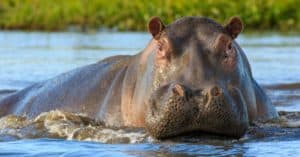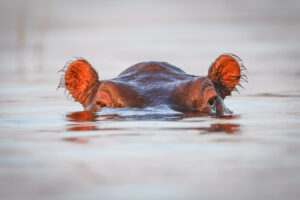Many have heard rumors that hippo milk is unique in the animal kingdom, if only for its color. Such beliefs have sparked memes, “fact-checkers,” and social media “fact posters” to either be misled or wrong entirely. In fact, one of the most famous scientific popularizers in the world may have contributed to some of the controversies around this potentially-pink substance. Well, let’s take a look and learn: is hippo milk pink?
Is hippo milk really pink?
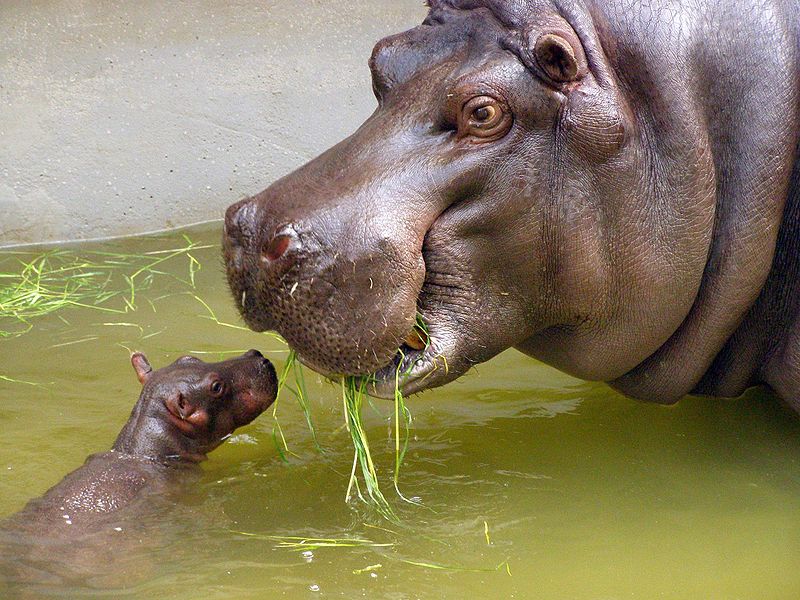
Hippo milk isn’t pink, but there was quite a bit of controversy surrounding it a few years ago.
©Frank Wouters, CC BY 2.0, via Wikimedia Commons – License
Plainly, no. Hippo milk is not pink. While we may want the rumor to be true (if only for novelty’s sake), it isn’t. There is, however, some interesting information that surrounds the rumor that may lead to the source of the false idea. Let’s take a deeper look.
Where did the idea come from?

©Oleg Golovnev/Shutterstock.com
While the idea likely isn’t new, it WAS popularized in recent years to the general public. The actual rumor gained popularity when some social media circles began posting “factoids” with the “interesting fact” that hippo milk was pink. It doesn’t seem that someone would lie about it, so it began to garner popularity across different platforms like Twitter and Facebook. Still, the big break for the rumor hadn’t come yet. That happened in 2013.
2013, nearly ten years ago, was an age where social media was brand new and misinformation wasn’t really understood. This is seen exquisitely in a Facebook post from National Geographic on July 26th, 2013. They posted this:
National Geographic, a scientific media company, was mistaken. Once Nat Geo posted the “fact,” however, it was soon everywhere. Often, accounts would post photos of strawberry milk and call it “hippo milk,” backed by the post from one of the major contributors to the scientific conversation. If the fact isn’t true, however, then how did it come about?
The likely origins of hippo milk being pink
Hippos are water-dwelling creatures with only brief trips onto land (they are distant relatives of whales, in fact). As mammals living so close to water, they have developed some particularly interesting anatomical traits to help them better adapt.
Hippos have special glands in their skin that secret oils and fluids that, to a human, would look like sweat. This oily secretion comes from their glands and spreads across their skin in a thin film. This thin film is clear, but as it is hit by UIV rays from sunlight, it turns a reddish color. This secretion is often known as “blood sweat.”
It is possible that this blood sweat (a reddish color), was accidentally mixed with a feeding baby hippo’s milk. This combination would have resulted in pinkish-colored milk, but it wouldn’t have been intentional. Also, it’s possible that a baby hippo covered in a bit of milk would have turned it red as it secreted the oily substance. Still, however it officially came about, the rumor isn’t true.
What is blood sweat?
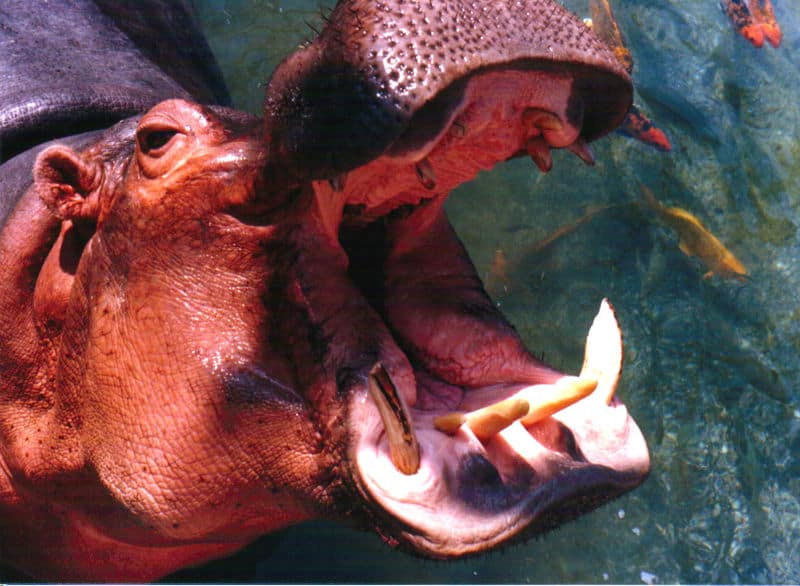
Hippos secrete oily substances that, when combined, turn red. This likely resulted in the belief that hippo milk is pink.
Blood sweat is the combination of hipposudoric acid norhipposudoric acid. When these two combine, they are secreted from specialized glands in the hippo’s skin. Hipposudoric acid is more reddish in color, while norhipposudoric acid is more orange in color. Let’s look at the role that these two acids play.
A hippo’s skin is generally grey to blue-black and their heads are brown and pink. Since the sun is so powerful in sub-Saharan Africa (where the hippos live), adaptations are necessary to protect their skin. The blood sweat primarily serves as a sunscreen, blocking UV radiation and keeping the hippos from burning. As they don’t have any fur or hair to cover their bodies, this adaptation is essential.
The two acids’ light absorption range peaks around the ultraviolet zone, allowing it to absorb the harmful light without it reaching the skin of the hippo.
Additionally, the acids act as an antibiotic, killing potential growths that would make their home on the hippo’s skin. Since the environments the hippos live in are prone to bacterial growth, this adaption is truly remarkable. The likely root of these acids is a synthesis of the amino acid tyrosine, showing that the secretion isn’t dietary. This allows the hippo to produce the “sweat” wherever it is.
Overall, the blood sweat keeps hippos cool, blocks their skin from harmful UV rays and acts as a sunscreen, and is an antibiotic that stops bacterial growth. They may not have milk, but that’s some pretty useful stuff!
What color IS hippo milk?
As boring as it may sound, hippo milk is white. It is likely that the rumor of pink hippo milk came from an accidental splashing of white hippo milk onto the red secretions present on a baby hippo. The resulting color would have been pink.
Interesting information about hippo milk
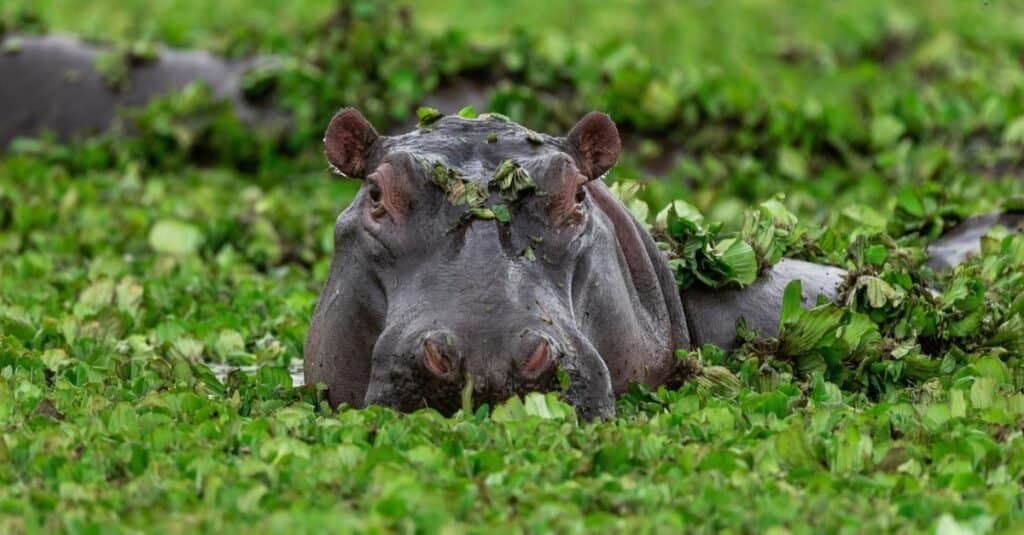
Hippo milk is under-researched, which ended up causing problems for a captive premature hippo at the Cincinnati Zoo.
©nataliatamkovich/Shutterstock.com
Although it’s not pink, it is really interesting!
Hippo milk is calorically dense. For babies to grow as fast as they need to (up to around 3,300 lbs), they need to have LOTS of calories. One source says that hippo milk is 500 calories per cup, but there isn’t a lot of information on it.
Most feedings happen in the water (in the wild, at least), meaning that baby hippos generally nurse while totally submerged.
A few years ago, Fiona, the baby hippo, was born. Fiona was premature but had a whole team of caretakers looking after her at the Cincinnati Zoo. During their research, they learned that hippo milk has a high amount of protein but is generally low in fat and sugar. The closest animal milk to a hippo? Giant anteater milk.
Hippo milk is so understudied that the zookeepers struggled to even come up with a base formula. There was so little research that they were essentially guessing and hoping that things worked out. After monitoring Fiona’s vitals and samples, they started to hone in on the specifics of what made “good hippo milk.”
What Animal Has the Fattest Milk?
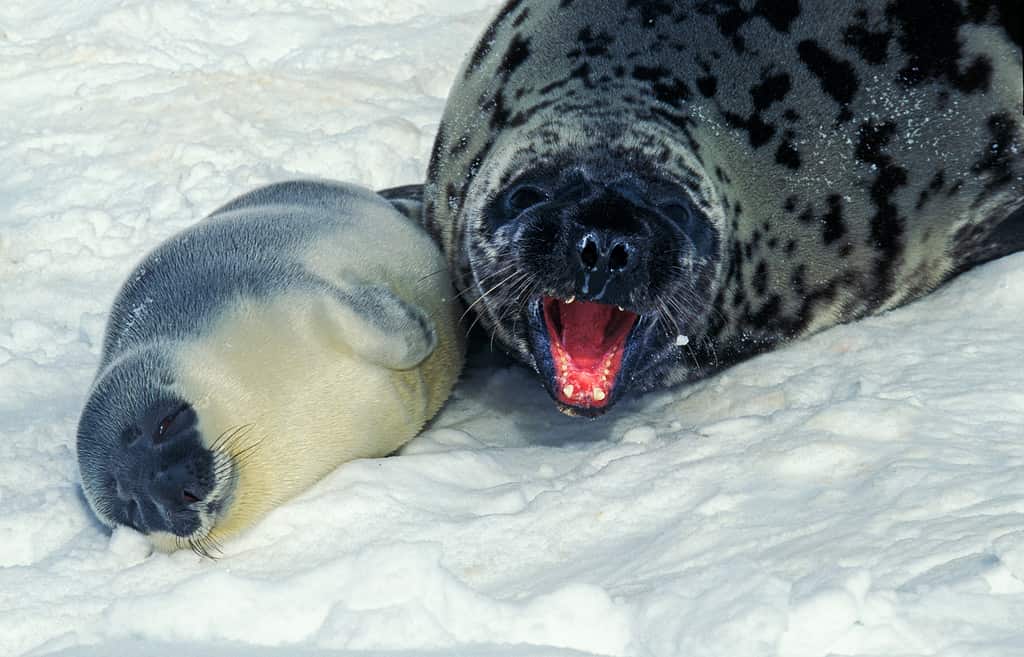
A hooded seal’s milk has a fat content of 60%, which helps her pup double in weight in just 4 days.
©slowmotiongli/Shutterstock.com
While pink milk may be a thing of the imagination, some animals produce milk that has unique characteristics other than its color. For example, the animal that produces the fattiest milk of any known on the planet is the hooded seal. While human breastmilk has 3-5% fat in it, compared to the cow which is almost the same at 3-4% fat, the hooded seals milk has an amazing fat content of 60%!
Seal pups need a high-fat diet to survive as they are born in the North Atlantic and Arctic oceans where the water temperatures are freezing. The pups are birthed on floating ice and are only fed by their mothers for 4 days due to the unstable environment. Pups consume over 16 pounds of milk for each of those 4 days, almost doubling in weight by the time they are weaned. The high-fat milk helps them develop blubber which provides insulation against the arctic cold temperatures.
The photo featured at the top of this post is © Kindlena/Shutterstock.com
Thank you for reading! Have some feedback for us? Contact the AZ Animals editorial team.



